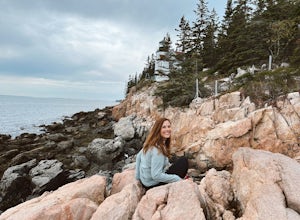Preserving Our Trails: A Call to Responsible Hiking
Over the years, hiking in the ‘Dacks has become increasingly popular.
The number of hikers signing the register at Cascade, the 36th tallest High Peak and arguably the most popular, has more than doubled each year over the past decade, according to the New York State Department of Environmental Conservation.
A trail register is like a history book showing who was on the trail, where they were from, how many people were with them and how many days they spent on the trail.
Though not everyone signs in when they hike, so the recorded statistics are usually a bit lower than actual numbers.
The number of signatures went from 16,091 in 2006 to 33,149 in 2015, with a majority of the increase occurring within the past five years.
This is a classic catch-22 because although there are a lot of people misusing the trails now, those same people are more likely to become advocates for the outdoors later in life due to their experiences when first getting started.
These future advocates will eventually want to protect the very trails they are destroying.
However, we already-conservationists also look at the negative aspects and work to improve them.
For starters, people tend to go to the bathroom when hiking.
Of course this is OK, but it’s the way people are doing it that’s extremely irresponsible and disrespectful.
I have seen piles of number two sitting in the middle of trails.
Not to mention the amount of toilet paper left behind in clear view of the trail.
Based off of Leave-No-Trace ethics, the proper way to dispose of human waste while hiking is to bury it at least six inches deep and at least two hundred feet from water, trails or camp.
Toilet paper should be buried in these ‘catholes,’ or put in a plastic bag and carried out with the hiker.
Gross? Yes.
Friendly to nature and fellow hikers? Double yes.
Another issue that has maximized, along with the number of people hitting the trails is the improper use of the land.
Lack of hiking etiquette, mainly by newbie park visitors, has caused trails to erode at sparring rates – another catch-22.
As an employee of the Adirondack Mountain Club’s Professional Trail Crew, I essentially have a job because of this very fact.
Nevertheless, eroded and mistreated trails are not a beautiful sight, nor are they healthy for the land.
On one project this past summer, my crew had just finished building a beautiful and hard-to-miss twelve-step staircase on the trail.
We did so to minimize trail widening, decrease erosion and to improve hiker safety.
While eating lunch, we witnessed a group of hikers reach the base of our staircase.
They looked at it, then looked at the sketchy herd path we were there to fix.
They looked back at our staircase again, then decided it would be smarter to take the sketchy path up the mountain.
Not only did this hurt vegetation, but we also watched as the hikers stumbled up the trail hurting themselves.
My crew wa.



